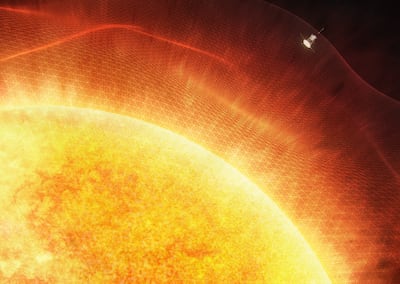The Sun has been unusually active this past week, sending out powerful bursts of energy known as solar flares, which have disrupted radio signals and created stunning auroras across parts of North America and Europe.
Scientists say this is a sign that the Sun is nearing the peak of its natural 11-year cycle, known as the solar maximum, which had been forecast to take place in July.
In recent days, the Sun has emitted several strong flares and enormous clouds of charged particles known as coronal mass ejections.
One particularly powerful flare on June 17, classified as X-class, the strongest type, caused brief radio blackouts in North America, with warnings issued for satellites and astronauts in orbit.
The Sun unleashed an even stronger X1.9-class flare on June 19, causing radio blackouts over parts of the US and Pacific region.
As the Sun nears solar maximum, there is an increase in sunspots and energy bursts that can sometimes be directed towards Earth.
Katepalli Raju Sreenivasan, a scientist at New York University Abu Dhabi, said that while solar activity is expected to peak sometime in the next few months, “no one knows exactly when”.
“It is not going to be especially violent activity this year, so I don't expect any unprecedented damage to Earth's communication infrastructure,” he told The National.
“But I should also say that what matters to us is not necessarily the magnitude of the solar activity but whether one or two of the highly energetic emissions from the Sun reach the Earth. Most, of course, pass by without any effect.”
Most of the time, these events do indeed miss Earth or only cause minor effects. But when a strong burst of solar energy is aimed directly at the planet, it can trigger geomagnetic storms, which are powerful disturbances that impact satellites, radio communication, GPS and power grids.
Dr Mojtaba Akhavan-Tafti, a space scientist at the University of Michigan, explained the science behind it.
“Solar activity peaks at the solar max because of the increasing number of active spots on the Sun, which are associated with strong releases of magnetic and charged particle energies into the interplanetary environment,” he said.
While this can cause disruptions to technology, it also leads to one of the most beautiful natural phenomena – Northern and Southern Lights, or Aurora.
“On the bright side, increased geo-effective phenomena means more chances of observing the mesmerising Northern Lights over the next couple of years,” he said.
“On the other side, heightened geo-effective space weather threatens our technological civilisation, from space-borne assets and the life of astronauts in orbit due to increased space radiation levels, as well as ground-based technologies including communication and power grid platforms due to increased electromagnetic disturbances.”
A reminder from history
Solar storms have affected Earth in the past. The most powerful on record took place in 1859, known as the Carrington Event, which disrupted telegraph systems and lit up skies around the world with bright auroras.
If a storm of that magnitude happened today, it could severely damage satellites, knock out internet and GPS systems and disrupt power supplies in major cities.
In 1989, a solar storm caused a blackout for six million people in Quebec, Canada. In 2003, a series of flares damaged satellites and forced airlines to reroute flights away from polar regions due to radiation risks.
Watching the Sun closely
To stay prepared, space agencies such as Nasa and the European Space Agency are using satellites to monitor the Sun around the clock.

Missions s the Parker Solar Probe and Soho (Solar and Heliospheric Observatory) help scientists understand what is coming and give warning before a storm hits Earth.
Nasa’s Parker Solar Probe became the first human-made object to “touch the Sun”, when it flew through the sun's upper atmosphere to sample particles and magnetic fields in 2021.
It beat its own record in 2024 when it made another close approach to the Sun, reaching 6.1 million kilometres from the Sun’s surface.
The spacecraft also achieved a record-breaking speed of 692,000 kilometres per hour during this fly-by.


